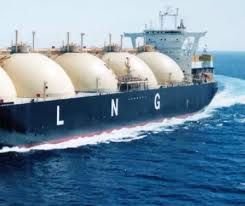
A cooler-than-usual start to Japan's summer this year has reversed the trend of Asia's year-on-year spot LNG price gains for the first time since 2009, an analysis of Platts price data and weather information showed.
Platts started assessing the benchmark Japan Korea Marker in February 2009 for spot LNG cargoes delivered to Japan and South Korea in March the same year, with monthly average JKM values gaining year-on-year until recently.
Platts September LNG JKM recorded its first year-on-year drop, falling 7.4% to $13.518/MMBtu for September from $14.599/MMBtu in the same period last year.
The September average was assessed over the period of July 16-August 15, and also fell 10.0% month on month from the August average of $15.025/MMBtu.
Demand from the key buying region of North Asia was weak, as North Asian end users were largely sidelined for September cargoes after term deals and high inventory levels left little capacity for additional spot purchases in the September period.
The majority of utilities in Japan, the world's largest LNG buyer, were experiencing a tank-top situation following a mild start to summer, with some utilities saying they were rescheduling cargoes to later periods because of a lack of spare storage capacity.
North Asia's summer typically begins in June and lasts until September. LNG demand is cyclical and summer is one of the two peak buying periods in North Asia as air conditioning demand increases.
Summer in Japan started on a cooler-than-usual note this year, with the average June temperature in Tokyo at 21.4 degrees C versus the 20-year average [1992-2011] of 22.395 degrees C for the same period, while the mean of July's temperatures in Tokyo was 26.4 degrees C versus the 20-year average of 26.32 degrees C for the same month.
It was cooler than average in June, and almost the same for July compared to the past 20 years, according to data from the US' National Aeronautics and Space Administration.
As many as six typhoons lashed across North Asia in June and July, bringing rain and cooling down the region.
Though temperatures started rising from the middle of July, more typhoons and rains at the start of August brought down temperatures, cooling any potential buying interest for September cargoes.
Source: Platts
We use cookies to improve your experience. By continuing to use our site, you accept our Cookies, Privacy Policy,Terms and Conditions. Close X